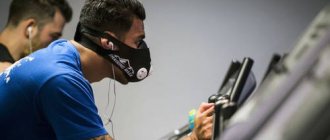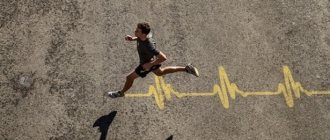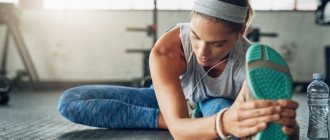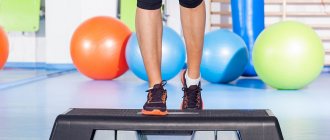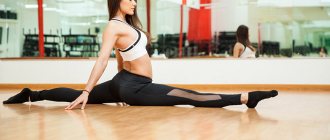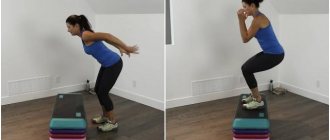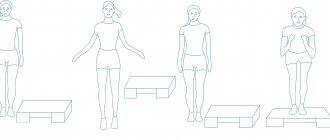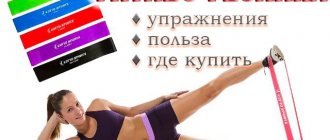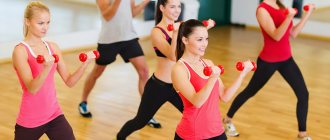The running mask, also known as the hypoxic mask, is still the subject of controversy and disagreement. Some famous athletes: NFL stars, MMA stars and many others, use masks to prepare for competitions, although this is considered more of a publicity stunt. However, some companies issue instructions for their products that recommend a set of low-intensity exercises aimed at static loading for any level of training. And yet, is it worth pursuing? First you need to understand what hypoxia is?
What is it and how does a training mask work?
A hypoxic mask is a patented simulator with a special system for limiting the flow of oxygen into the lungs through valves. Such a simulator forces the respiratory muscles, including the diaphragm, to be loaded when inhaling, thereby improving the functions of the respiratory system.
Why is this necessary? In extreme conditions or at high-level competitions where endurance is required, training with a mask improves the body’s ability to adapt to subsequent loads with a normal supply of oxygen, that is, without a mask. Thus, after such exercises, the lungs work in full, saturating each cell with oxygen many times more. Manufacturers position their product as a training simulator in the mountains. But this is not entirely true, because the air flows through the valve system undischarged.
Important! Hypoxia or oxygen starvation is a decrease in the supply of oxygen to the body - to tissues and organs. With prolonged hypoxia, pathological changes develop, and the central nervous system, liver, kidneys, heart muscle suffer, and even death occurs.
Only with proper hypoxic training in a mask can resistance to extreme situations for the body be achieved against hypoxia caused by high altitude conditions, low atmospheric pressure or poorly ventilated closed spaces.
Who will benefit from the device?
- Professional athletes for whom a standard lesson no longer provides enough stress, even in combination with strength exercises;
- People who want to “pump up” their breathing and monitor proper breathing during exercise;
- For training the cardiovascular system (only if the heart is absolutely healthy);
- Athletes who want to improve their level of physical fitness.
The device is not only worn by runners, it is also used by boxers, cyclists, and weightlifters. It is relevant for any land sports - the most important thing is that the person has no contraindications for health reasons. The latter is clarified by the doctor during a medical examination.
In appearance, the device resembles a respirator - there are options on sale that completely cover the face, or only its lower part. It fits tightly over the mouth and nose area and is secured to the back of the head, most often with Velcro. In the front part of the device there are valves and membranes with the help of which the athlete regulates the flow of oxygen and pressure - this is how the high-mountainous terrain is simulated.
Benefits of running with a mask
- Trains the muscles that promote breathing, increasing their tone.
- Improves oxygen saturation of the lungs, increasing their volume.
- Increases the anaerobic threshold - the body's performance at high heart rate. Learn more about heart rate zones →
- Increases the overall endurance of the body.
The mask can be used for running outside or in the gym, and training on cardio equipment.
Important! Please note that only trained, healthy athletes can run while wearing a training mask. Beginners and people suffering from dysfunctions of the cardiorespiratory system are prohibited from training in a hypoxic mask!
Approximate prices
You can buy the device at any specialized store that sells sports equipment. If you are too lazy to go to the store, make your purchase online. If you are interested in the average price of a sports mask for running, focus on the range of $50-80, you should meet it. A little later in the article we will talk about the most popular models that are praised most often. Well, now let's figure out how to control the device and what to look for when choosing it.
Some people mistakenly call a running mask a balaclava, due to the external similarity of the former to the latter. The balaclava completely covers the face, leaving the eyes and mouth open - it protects skiers from snow, wind, and frostbite. The item does not place any additional stress on the body and is part of sports equipment. If you are wondering what a mask for running and endurance training is called differently, the correct answer is hypoxic.
Minuses
- Leads to hypoxia, which can be fatal for many unprepared individuals.
- Increases stress, some people experience panic and nervousness when they feel oxygen deprived.
- The mask makes it difficult to breathe, which causes respiratory discomfort for many.
- In untrained individuals, heart rate may increase significantly.
- The greater the inhalation resistance that the mask creates, simulating high altitude and increasing hypoxia, the lower the hemoglobin level drops.
- Causes adverse reactions and pathologies - fainting, cardiac arrhythmia and brain hypoxia.
Negative points
We understand why you need a running mask. It increases endurance, provides an enhanced workout and allows you to get the same load in less time. However, if the device is used incorrectly, it can cause harm. There are a number of precautions and rules that need to be taken into account.
Please note that the use of a mask is contraindicated in the following cases:
- somatic or infectious diseases;
- chronic respiratory diseases;
- respiratory failure;
- hypertensive crisis;
- presence of tumors.
In the absence of contraindications, the mask will only bring benefits. But still, it would not be superfluous to consult with a specialist before using it.
How to properly run with a mask to improve endurance
Even a trained athlete should start their training at a low intensity to test the body's adaptation to unusual loading conditions.
Perform your first workouts at the lowest resistance level, set using the valves. Only then gradually reduce the access of oxygen.
In the first lesson, run 100 meters with rest without a mask, and so on for 5 approaches. With each session, increase the distance by another 100 meters, reducing recovery time. Over time, do your entire workout wearing a mask.
Do not exceed the duration of the lesson, 20 minutes is enough , otherwise there is a risk of exceeding the permissible oxygen deprivation.
Is it worth buying a mask for training?
If you are just starting to play sports, it is better to refuse a training mask. The body has a hard time with regular training. Only athletes with experience should begin to complicate their training - at least 1 year of regular training 3-4 times a week. Another indicator of good form is load tolerance. If you can easily run 10-15 km at a conversational pace (breathing does not interfere with free communication), you can experiment with a mask. Otherwise, continue working on yourself without a mask.
We recommend reading: Protein for post-workout recovery .
How to choose a breathing mask for running
- First of all, choose the appropriate size so that the mask fits tightly to your face. Each manufacturer should have a scale on which you can choose the right size based on your own weight category.
- Choose masks with multi-level modes , in which you can select the resistance individually.
- Choose the highest range of air restriction , simulating low altitude - from 900 meters and over 5000 for more advanced athletes.
- The mask must be sealed , made of high-quality materials, easy to clean and disassemble, and have reliable fastenings.
Where to buy an oxygen mask and how much does it cost?
An oxygen mask for breathing while running can be purchased at sports equipment stores, both regular and online stores. Its cost will be determined by the specific model and quality of the mask and will amount to 4000-7000 rubles.
When choosing a specific product, take into account such features as the quality characteristics of the oxygen mask, its appearance, cost, and also for which specific workouts. By choosing the right mask and following all the rules when using it, you can significantly improve your lung capacity and pulmonary resistance, your level of endurance, and increase the effectiveness of your training.
Top 3 best manufacturers of sports masks for running
Elevation Training Mask 2.0
The original patented mask of the American manufacturer has 6 resistance levels, suitable for training of any difficulty level. Approximate cost 4500 rubles.
Phantom Athletics
The brand produces masks with a complex multi-level valve system, with the ability to control the air supply. There are 3 sizes: up to 70 kg, up to 100 kg and over. Approximate cost from 1900 rubles.
Running Mask by Hvat
The Russian manufacturer did not bypass training masks and created its own products with 6 levels of oxygen supply, making training accessible. Cost from only 990 rubles.
Do masks provide the training effect that manufacturers claim?
Initially, masks from Training Mask, a pioneer and the most popular brand on the market, had the prefix Elevation in their names, that is, they literally meant “masks for high-altitude training.” The inside of the package also said “Simulates High Altitude Training.”
After the release of a series of revealing articles and studies, where scientists and experts made strong arguments that training on the plain cannot imitate high-altitude training only due to restrictions in the air supply, the manufacturer removed any mention of high-altitude training from the website and packaging. Now those versions of packaging are reminiscent of the remnants of old batches of products that can be found on ebay, Ozon and other online stores.
Nevertheless, the story of simulating high-altitude training is firmly entrenched in the minds of consumers, so it is still believed that masks can be used to simulate conditions in mid-altitude and high altitudes. The imitators of the Training Mask company also sin in the same way, who, while blindly copying the appearance, also copy the old description about working in high-altitude training mode.
In the descriptions and instructions for such masks, you can see data where the level of difficulty correlates with the altitude above sea level, which, according to the manufacturer, the mask imitates:
Controversy over use
The controversial use of masks is based on the lack of thorough research on their use. The training itself under hypoxic conditions has been fully proven, simulating a small amount of oxygen in mountain conditions.
When the body begins to experience oxygen starvation, it activates the production of hemoglobin and myoglobin, which in turn increase capillary density. The result is better overall endurance and increased oxygen absorption.
Despite this, the use of a mask does not create a rarefied environment during inhalation, but only prevents the free passage of air. In addition, studies conducted in the USA have shown that an athlete using a mask reduces the proportion of oxygen consumption by no more than 2%, which is inferior to training in hypoxic conditions in the mountains.
As a result, we can conclude that the mask is not the best way to strengthen ANAEROBIC endurance and serves only as a way to strengthen inspiratory muscle fibers (intercostal, internal intercartilaginous, external, etc. surrounding the abs and chest).
All about masks for non-invasive pulmonary ventilation (NIV)
The head of the long-term respiratory support department and palliative care department No. 3, an anesthesiologist-resuscitator, and rehabilitation specialist at the State Budgetary Healthcare Institution “Moscow Multidisciplinary Center” talks about what types of masks there are for NIV, how to choose the right one, how to avoid bedsores on the face from the mask and other problems. palliative care" of the Department of Health of Moscow Varvara Brusnitsyna.
Types of masks
“I really don’t want to sleep in a swim mask at night,” my patient tells me. “Why, they are different,” I answer. “Oh, well, of course. Different color?" - she laughs. This is how comical a conversation with a patient who has to choose a mask for non-invasive ventilation often looks like. The choice of mask is extremely important, because with a properly selected, suitable mask it is much easier to adhere to the prescribed CPAP therapy.
So how to choose a mask for NIV? We'll figure out.
So, let's first talk about the types of masks.
They are: according to the type of fit to the face
- nasal,
- in the form of nasal cannulas,
- orophonasal,
- full-face;
by the presence of an exhalation hole:
- ventilated
- unventilated;
according to the presence of the frontal support of the mask:
- with frontal support,
- without frontal support.
According to the presence of a port for oxygen supply:
- with port;
- without port.
Size: how to choose?
To choose a mask, you need to know its size. Manufacturers usually provide a template that, by applying it to your face, you can determine which size will suit you. But if there is no pattern, you can rely on average values.
To determine the size of oronasal masks
it is necessary to measure the distance from the bridge of the nose to the point that is located midway between the lower lip and the tip of the chin. If this distance is less than 9 cm, then a mask in size S is suitable for you, if it is about 10 cm, then - M, and if 11 cm or more, then - L. There are also masks in size XL - for large faces.
Measurements for selecting an oronasal mask
For nasal masks
you need to measure the distance between the wings of the nose (under the nose): if it is 23-37 mm, then size S, if 30-45 mm, then - M, and if 45-55 mm, then - L.
Measurements for selecting a nasal mask
To select a full face mask
it is necessary to measure the distance from the top of the eyebrow to the protruding part of the chin with a ruler: the mask will have size S if its height is from 95 to 108 mm, size M if its height is from 108 to 121 mm and size L if its height is from 121 to 121 mm 134 mm.
Measurements for choosing a full face mask
There are so-called universal masks
. What is universal about them is the size of the frame. But the air cushion, that is, the silicone part, is available in four sizes: S, M, L and children's. Such masks are suitable, for example, for those patients who, due to their illness, may lose a lot of weight in a year, which is why their face will change, and a smaller mask may be required. In this case, you do not need to buy a new mask; you just need to replace its silicone part.
Table for the correct selection of the size of masks for NIV
Types of masks: more details
Nasal mask
A nasal mask, as the name suggests, is worn over the nose. It is usually made in the form of a round-shaped bowl or bowl and is adjacent to the skin around the nose. We discussed the choice of size above. Among the nasal masks, there are also universal ones that do not have a size: the “pad” of such a mask, fitting the patient’s nose when first put on, seems to adapt to any shape and size of the patient’s nose. This is achieved by applying liquid silicone rubber to the surface of the “pad”.
What is the advantage of a nasal mask? Many patients who breathe through their nose liked it. They note that it gets used to faster than an oral-nasal mask and that the air flow feels smoother. One of our patients with COPD tried different types of masks, but settled on the nasal one: “It’s like I’m breathing on my own, but a little more intensely.” In addition, you can talk in such a mask. And the risk of developing bedsores is less.
A nasal mask is suitable for obstructive sleep apnea syndrome, which I mentioned in the article about NIV. And when the patient already has an oronasal mask and is on NIV for more than 12 hours in a row, the nasal mask can serve as a temporary replacement for the oronasal mask.
Let me emphasize once again that it is used only in case of preserved nasal breathing. If the patient suffers from sinusitis - simply put, swelling of the nasal mucosa - or he has anatomical features of the nasal passages, a deviated nasal septum, a nasal mask will not suit him.
A patient wearing such a mask should breathe through his nose, not his mouth. Otherwise, the air supplied by the device under pressure will simply exit through the open mouth without entering the respiratory tract. Of course, there are chin straps that keep the mouth and jaw closed, but their use often causes discomfort for the patient.
Cannula mask
What is a cannula mask? CPAP cannulas, also called nasal cushions, are the smallest sized CPAP masks. The cannulas are inserted into the nostrils (rather than on the nose) and rest over the upper lip. The mask's two bolsters (or pads) fit snugly against your nose, delivering pressure in a more targeted manner than nasal CPAP masks. They are easy to use for patients who wear glasses and read. Just like nasal masks, cannulas only function when you breathe through your nose.
An example of a cannula mask. Photo: Sharon McCutcheon/Unsplash
Due to their tight fit to the nostrils and fixation, they allow the patient, for example, to sleep on his stomach. In addition, for male patients with a beard, this mask provides a better seal.
From a psychological point of view, using a cannula mask may be easier for a person. We had one patient with ALS for whom even using a nasal mask caused anxiety. Whether it was claustrophobia or not is not entirely clear, but it was nasal cannulas that solved this problem.
DNA tests for ALS: what are they and is it worth doing them? Candidate of Biological Sciences Fedor Konovalov talks about modern genetic tests for mutations in amyotrophic lateral sclerosis, their goals and interpretation of results Fedor Konovalov
Neurological problems
But the cannula mask also has disadvantages. Cannulas can cause discomfort and even pain in the nostrils, are more likely to cause nasal dryness, and may leak if the patient is on high-pressure air therapy. This happens for the following reason. Imagine two vessels with water, at the bottom of each there is a hole through which the water pours out. In one vessel this hole is very narrow, and in the other it is wide. And if you add water to both vessels, then when the water reaches the edges, the following will happen: a vessel with a wide hole at the bottom will not overflow, and the water will not overflow, because the volume of water is the same as the one you are adding from above, will go through a wide hole at the bottom. But with the second vessel it will be different. The water will not have time to escape through the narrow hole at the bottom, and soon it will overflow. The same thing happens with cannula masks if they have to be used at high pressure levels. Only the vessels are our nostrils, and the water is the air supplied by the apparatus. If you increase the pressure in the settings, this means that the volume of air supplied by the device will increase and simply will not have time to completely pass through the narrow nostrils, and some of the air will exit along the path of least resistance - past the nostrils into the atmosphere.
Mouth-nose masks
Oronasal masks (Full Face) cover the surface of the face from the lower lip to the bridge of the nose, that is, they cover both the nose and mouth. Many patients find this mask comfortable because it allows them to breathe through their mouth without reducing the pressure delivered through the mask. What does it mean? For example, when using a nasal mask, air enters through rather narrow spaces - the nasal passages, and when the patient needs high therapeutic pressure numbers, the air passes through them with force, which is unpleasant for the patient. While the mouth is a wider space, so the passage of air under the same high therapeutic pressure through the mouth does not cause discomfort.
Oronasal mask on a patient with ALS. Photo: Anna Galperina / Live Now Foundation, https://als-info.ru/
For patients suffering from dry mouth, such masks will be the best option because humidified air will flow through both the mouth and nose. In addition, frequent rhinitis or anatomical changes in the nasal cavity, or deviated nasal septum are not a contraindication for the use of an oronasal mask, unlike, for example, a nasal mask.
If the patient is used to breathing through his mouth, such a mask would also be a good option. Oronasal masks are good for people with claustrophobia because they fit only on the outside of the face, unlike nasal cushions or nasal CPAP masks, which touch the upper lip and bridge of the nose or are inserted directly into the nostrils.
However, sealing is more difficult to achieve with oral-nasal masks because the large face contact area may cause air leakage. And air leakage from the top of the mask causes dry and irritated eyes for some people.
Another disadvantage of mouth masks is that they make it difficult to sleep on your side or stomach, reading, watching TV, and wearing glasses.
Full face mask
A full face mask is a mask that covers the entire face. It is quite rarely used in the first stages of selection; most often it is the option of choice, for example, in cases of severe pressure ulcers on the bridge of the nose or other parts of the face caused by the fit of the oronasal mask.
Full face mask for NIV / Mediflex Homecare. mfhc.ru
However, a full-face mask is more difficult to get used to, since when using it, the entire face is, as it were, in a confined space. But it has many advantages.
Due to the minimal contact area between the mask and the skin, bedsores are less likely to form. It is quite suitable for people suffering from claustrophobia because it does not block their view. The plastic from which this mask is made is absolutely transparent, which means you can read in it (only without glasses) and watch TV.
Sometimes patients experience fogging on the inside surface of the mask. In this case, you can wipe the inner surface with a special solution to prevent glasses from fogging up.
Another advantage of a full-face mask is that air leakage during use is minimal, not due to the strong tension of the straps, but due to the fact that the soft silicone gasket ensures a quick, uniform and comfortable fit of the mask to the face.
The large surface area equalizes pressure within the mask and minimizes eye irritation.
Respiratory disorders in patients with SMA Methods of correction and prevention of respiratory problems SMA Families Foundation Vasily Shtabnitsky
Symptomatic treatment
Ventilated and non-ventilated mask
Let's continue analyzing the types of masks according to the classification. What is a ventilated and non-ventilated mask?
Most NIV masks are ventilated, that is, they have a so-called exhalation valve, a hole in the mask through which exhalation occurs. But there are also non-ventilated masks, without an exhalation valve, and exhalation in them is carried out through a special hole in the circuit.
In other words, the mask itself, as we said above, is selected according to size, and the nozzle, which is attached at one end to the mask and at the other to the circuit, can be either with or without a valve.
One of the German mask manufacturers produces separate attachments with or without a valve - thus, the buyer does not overpay.
Different contours are selected for ventilated and non-ventilated masks. It all depends on what kind of mask your doctor recommends to you.
Masks with an additional port
Masks with an additional port (additional hole) are needed, for example, to connect oxygen. For example, with severe COPD, additional oxygen is often required, which means that such a mask is needed.
Masks with forehead support
Why is there a forehead support in the mask and what is it? The forehead support is a structure that is attached to the top of the mask and fits against the forehead. The forehead rest is made of plastic, just like the mask itself, and the part directly adjacent to the forehead is silicone. It ensures a more even distribution of mask pressure on the facial skin, thereby reducing the risk of bedsores. And for some manufacturers, the forehead support itself can be separated from the mask and fixed in a more convenient position for a particular patient. A forehead support may be the option of choice when the patient is forced to wear a mask constantly. However, not everyone likes the frontal support; some patients find it annoying. Therefore, this is also not a universal option - you have to try it.
Mask material
Another issue worth raising is the material from which the mask is made. The mask itself is plastic (polycarbonate), and the part adjacent to the face (“pad”) is usually silicone, but many manufacturers modify the pad adjacent to the face. For example, as we said above, there are nasal masks with liquid silicone rubber applied to the pad. There are masks whose pads are filled with gel for a softer fit.
We had a patient with severe cachexia - she had no subcutaneous fat at all - so the silicone pad, pressing the skin against the facial bones, caused her extreme pain. Then we offered her a mask with a gel pad. Of course, this did not completely solve the problem, because the mask adheres to the skin is inevitable, but the pain went away.
The straps that secure the mask to the face can also be different: made of soft or hard material, with fixation with a rivet, Velcro, buckle, magnetic clasp, etc. - whatever is convenient for you. But if the mask is equipped with magnetic fasteners, you need to follow special instructions when using it. This mask must be kept at least 50 mm away from any active medical implant, such as a pacemaker or defibrillator. The use of masks with magnetic components is contraindicated in patients with an intracranial metal hemostatic clip for the treatment of cerebral aneurysm, as well as in patients with a metal foreign body in one or both eyes (after traumatic eye injuries).
Problems and complications when using a mask
Let's look at the most common problems associated with using a mask that patients on NIV face.
Firstly, there is the possibility of red spots appearing on the skin in the area where the mask adheres to the face. In this case, you first need to check whether it is tightened too tightly. If you cannot solve the problem by loosening the mask straps, you can use additional gel pads on the silicone part of the mask, soft patches on the skin in the area where the mask or forehead rest is attached to the face. On the face under the mask there may be skin irritation and inflammatory elements due to neglect of hygiene rules.
Important Even if you wear a mask all day, from time to time you need to remove it and wipe your face with sanitary napkins, and in the morning and evening, wash your face with any hypoallergenic gel. The mask itself must also be kept clean.
Secondly, with prolonged use of nasal cannulas, as we said above, wounds may form in the nose where the silicone cannulas adhere to the nasal cavity. In some cases, it takes time for the skin to thicken in response to the impact of a foreign object creating pressure on it - as, for example, happens in people who frequently exercise with dumbbells: the skin at the base of their fingers becomes stiffer and thickens. But if, after a while, wounds in the nose still form, you need to replace the cannula mask with a nasal or oronasal mask and use them alternately. Moreover, while the nostrils are resting from the cannula mask, you can lubricate the wounds with wound-healing, anti-inflammatory ointments.
Thirdly, compressed air, even humidified, can dry out the mucous membranes. Even if the device is equipped with a humidifier, people with sensitive nasal mucosa (for example, with allergic rhinitis, chronic sinus diseases) may feel dryness. In NIV devices, as a rule, it is possible to adjust the strength of humidification of the air mixture, and this option is available in the patient menu. In addition, you can use additional irrigation of the nasal mucosa with saline solutions for rinsing the nose, which can be found at the pharmacy.
Fourthly, a fairly common problem is the occurrence of a headache after a night spent on NIV.
If you wake up with a headache after using a CPAP mask, there could be two reasons: either excessive air pressure or problems with the sinuses, such as chronic inflammation in them.
You should contact your doctor. Sinus problems can also manifest as headaches that radiate to the area behind the ears, behind the cheekbones, or in the forehead or eyes. Sometimes headaches are caused by a nasal infection like sinusitis. Pain may also be caused by nasal congestion or pressure changes that manifest as pain, or dry sinuses from air passing under pressure.
And finally, many patients complain about noise when the NIV machine operates. It occurs due to air escaping from the exhalation valve. This noise, especially during the first time using the device, prevents patients from falling asleep. And one of our patients said that her cat was not at all afraid of the device itself, but he stopped sleeping at her feet because it was this noise that scared him. It would seem a comical situation, but not for the patient: for her, the cat was not just a friend, but also a “foot warmer.” Manufacturers are trying to solve this problem by modifying the valve holes, making them smaller and covering them with a special plate. As a result, exactly the same amount of air comes out through these holes, but much quieter.
By the way, in the text “Going home on invasive ventilation: isn’t it scary?” Varvara Brusnitsyna talks about the experiences people have when they have an alternative to being at home on a NIV machine. The doctor explains in detail how the patient is transferred home, how to prepare for it and what to consider. Read the link.
Mask care
Masks of all types and types must be cared for daily.
You need to wash the mask every day, and this is very important, as bacteria accumulate in it. To do this, you need to disconnect the silicone part from the plastic one and wash them thoroughly with soapy water. It is very important to thoroughly rinse the silicone pad (the part of the mask that is adjacent to the face). Then wipe with an antiseptic, for example, miramistin and dry. The mask itself without straps should be washed once a week. Belts - according to the degree of contamination and only with cold water, since in warm water they lose their ability to stretch.
Summary: how to choose the perfect mask?
So how do you choose the perfect NIV mask for you? First, you need to choose the right size. Secondly, you should not experience severe discomfort when putting on the mask for the first time. Unfortunately, many complications that arise when using masks cannot be avoided, but they can and should be prevented.
Now the choice of masks is very wide, manufacturers are improving their properties. But only you know which mask is right for you, and perhaps in order to settle on the ideal mask, you need to try several options. I had a patient who tried 10 (!) different types of masks, but settled on the eleventh. He said: “Yes, damn it, they are expensive, but the improvement that I feel after using the device is more important to me, so I was looking for a mask that was comfortable for me.”
The material was prepared using a grant from the President of the Russian Federation provided by the Presidential Grants Foundation.
What to look for when choosing
To choose a running mask, you need to pay attention to the following nuances:
- quality - it is better to focus on well-known brands;
- appearance – you should like the mask;
- sensations – put on the mask and evaluate your feelings (is it comfortable, is the weight suitable, etc.);
- size - if your weight is less than 70 kg, size S is suitable for you, from 70 to 100 kg size M, above - L.
Reference! To extend the service life of the mask, the respirator must be cleaned after each use.
